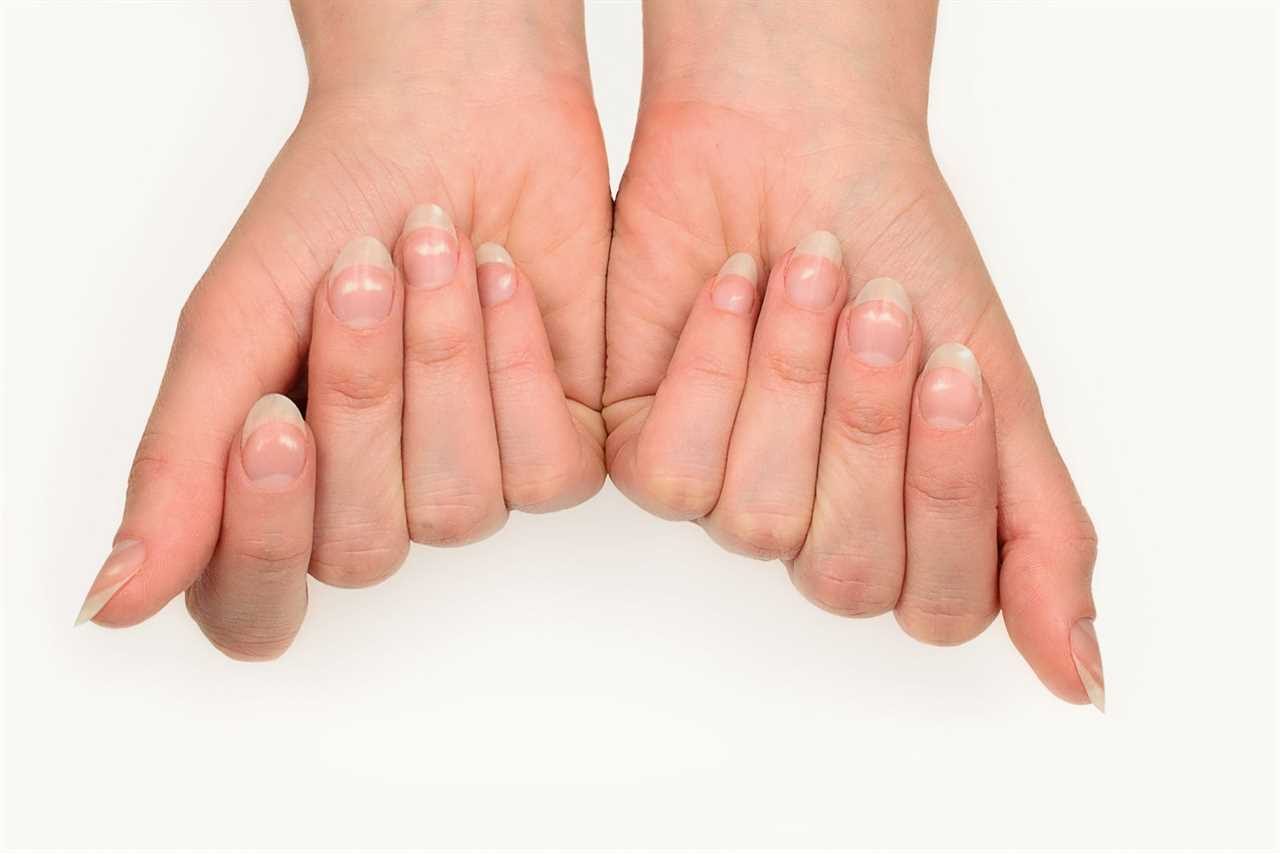IF YOU’RE a Brit who loves a bit of sun, you might know to check you skin for signs of melanoma.
But did you know the deadly skin cancer can develop in obscure places?

If you notice a streak on your nail, it might be a sign of melanoma
Strange as it might sound, it’s important to check your nails too, according to the American Academy of Dermatology Association (AAD).
Melanoma is the fifth most common cancer in the UK, according to Cancer Research UK.
Though it’s rare for skin cancer – including melanoma – to develop under and around your fingernails and toenails, it does happen.
It tends do be more common in people of colour and if you’re older, according to the AAD.
You could also be at risk if you have a family history of melanoma or you’ve injured your nails in the past.
There are 5 signs to watch out for on and around your nails that could indicate you have melanoma.
1. A dark streak
This may look like a brown or black band on your nail, the AAD said.
It’s most likely to show up on the thumb or big toe of your dominant hand or foot. However, the discoloration could develop on any one of your nails.
A woman recently took to TikTok to recount how a ‘cool’ nail streak she’d had for 10 years – which looked a like brown line painted across her nail – turned out to be a sign of subungual melanoma.
People who have melanoma under their nail may wrongly believe they just have bruising, or not even notice a change at all. Aside from a line, it can also look like irregular pigmentation under the nail.
Maria Sylvia revealed that her own dark streak grew from the nailbed, where a cancerous mole sat.
2. Dark skin next to your nail
When the skin around your nail becomes darker, it could be a sign of advanced melanoma, according to AAD.
3. Your nail lifting from your fingers or toes
You might think you’ve just stubbed your toe, but a nail peeling or lifting off from the skin might be the sign of something more sinister, according to the AAD.
“When this happens, your nail starts to separate from the nail bed,” it explained.
“The white free edge at the top of your nail will start to look longer as the nail lifts.”
4. Your nail splitting
Your nail splitting down the middle is yet another possible sign of melanoma.
5. A bump or nodule under your nails
Pay attention if you notice something bumpy under your nail.
This might be accompanied by a band of colour, which could be wide and irregular or dark and narrow.
Nail melanoma is often diagnosed at a more advanced stage than melanoma on the skin, according to the AAD.
It advised you see a dermatologist if you notice changes to your nails.
“The good news is that when found early, melanoma — even on the nails — is highly treatable,” the AAD said.
So it’s useful to know what to look for and to regularly check your nails.
Laura Harker, a screening nurse at The MOLE Clinic, advised you also keep an eye on other less obvious areas, such as your hairline, behind the ears, the soles of your feet and your arms.
There are two main types of skin cancer.
Non-melanoma skin cancers are diagnosed a combined 147,000 times a year in the UK, while melanoma, the most serious type of skin cancer, is diagnosed 16,000 times a year.
GP Dr Philippa Kaye told Sun Health: “It’s important to know your body and become familiar with your moles and skin and what they look like, so you will recognise if something changes,”
“See a doctor if you notice a mole is changing, which can be in colour, size, appearance but also in sensation – so if a mole is bleeding, crusty or becomes sore or itchy.”
Your GP will likely use the ABCDE mnemonic to help tell if a mole is cancerous or not, and you can use it at home too.
Get a loved one to help you check your WHOLE body – including the bits you can’t see – and don’t forget to return the favour!
- Asymmetrical – melanomas usually have two very different halves and are an irregular shape
- Border – melanomas usually have a notched or ragged border
- Colours – melanomas will usually be a mix of two or more colours
- Diameter – most melanomas are usually larger than 6mm in diameter
- Enlargement or elevation – a mole that changes size over time is more likely to be a melanoma






